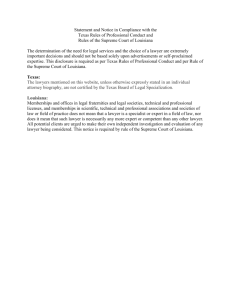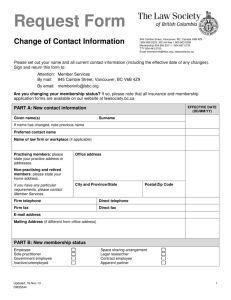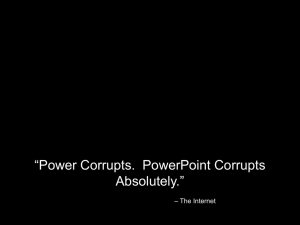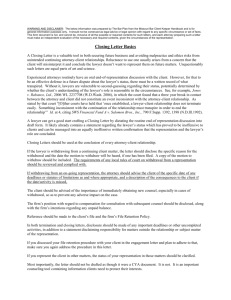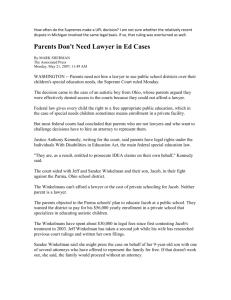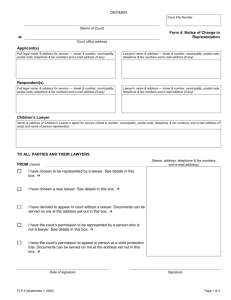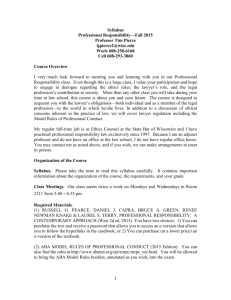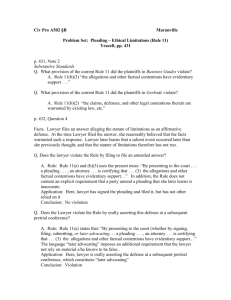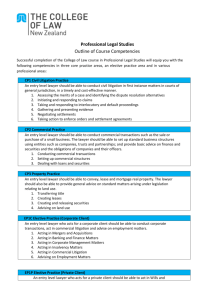MacCrateReportFundamentalLawyeringSkills
advertisement
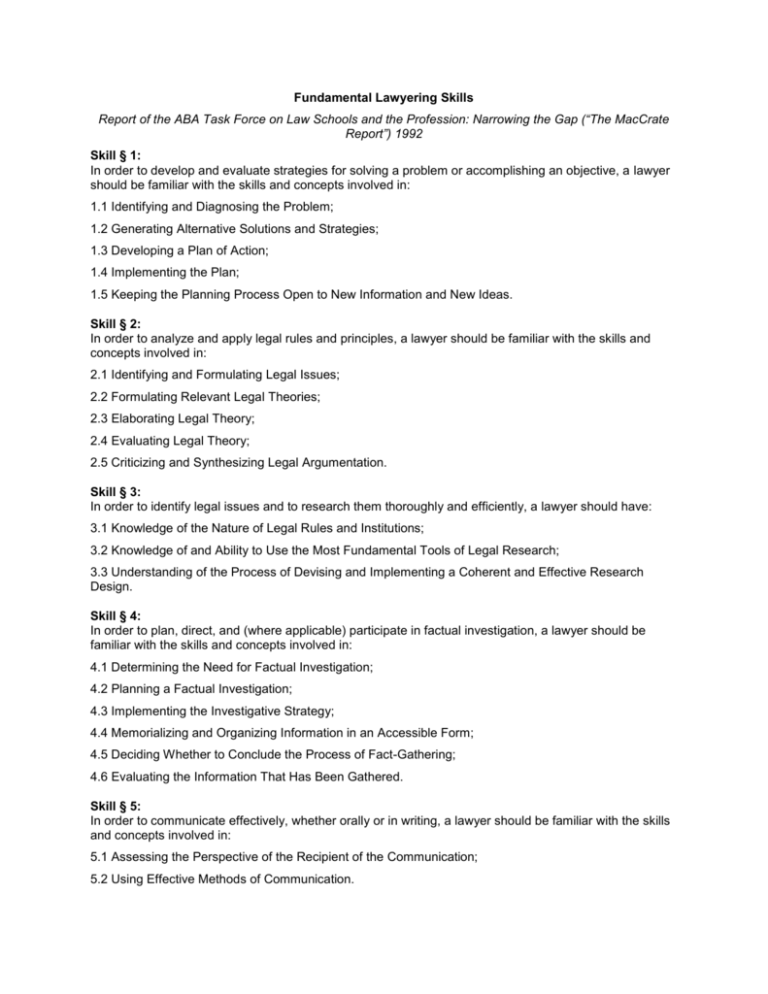
Fundamental Lawyering Skills Report of the ABA Task Force on Law Schools and the Profession: Narrowing the Gap (“The MacCrate Report”) 1992 Skill § 1: In order to develop and evaluate strategies for solving a problem or accomplishing an objective, a lawyer should be familiar with the skills and concepts involved in: 1.1 Identifying and Diagnosing the Problem; 1.2 Generating Alternative Solutions and Strategies; 1.3 Developing a Plan of Action; 1.4 Implementing the Plan; 1.5 Keeping the Planning Process Open to New Information and New Ideas. Skill § 2: In order to analyze and apply legal rules and principles, a lawyer should be familiar with the skills and concepts involved in: 2.1 Identifying and Formulating Legal Issues; 2.2 Formulating Relevant Legal Theories; 2.3 Elaborating Legal Theory; 2.4 Evaluating Legal Theory; 2.5 Criticizing and Synthesizing Legal Argumentation. Skill § 3: In order to identify legal issues and to research them thoroughly and efficiently, a lawyer should have: 3.1 Knowledge of the Nature of Legal Rules and Institutions; 3.2 Knowledge of and Ability to Use the Most Fundamental Tools of Legal Research; 3.3 Understanding of the Process of Devising and Implementing a Coherent and Effective Research Design. Skill § 4: In order to plan, direct, and (where applicable) participate in factual investigation, a lawyer should be familiar with the skills and concepts involved in: 4.1 Determining the Need for Factual Investigation; 4.2 Planning a Factual Investigation; 4.3 Implementing the Investigative Strategy; 4.4 Memorializing and Organizing Information in an Accessible Form; 4.5 Deciding Whether to Conclude the Process of Fact-Gathering; 4.6 Evaluating the Information That Has Been Gathered. Skill § 5: In order to communicate effectively, whether orally or in writing, a lawyer should be familiar with the skills and concepts involved in: 5.1 Assessing the Perspective of the Recipient of the Communication; 5.2 Using Effective Methods of Communication. Skill § 6: In order to counsel clients about decisions or courses of action, a lawyer should be familiar with the skills and concepts involved in: 6.1 Establishing a Counseling Relationship That Respects the Nature and Bounds of a Lawyer's Role; 6.2 Gathering Information Relevant to the Decision to Be Made; 6.3 Analyzing the Decision to Be Made; 6.4 Counseling the Client About the Decision to Be Made; 6.5 Ascertaining and Implementing the Client's Decision. Skill § 7: In order to negotiate in either a dispute-resolution or transactional context, a lawyer should be familiar with the skills and concepts involved in: 7.1 Preparing for Negotiation; 7.2 Conducting a Negotiation Session; 7.3 Counseling the Client About the Terms Obtained From the Other Side in the Negotiation and Implementing the Client's Decision. Skill § 8: In order to employ-or to advise a client about-the options of litigation and alternative dispute resolution, a lawyer should understand the potential functions and consequences of these processes and should have a working knowledge of the fundamentals of: 8.1 Litigation at the Trial-Court Level; 8.2 Litigation at the Appellate Level; 8.3 Advocacy in Administrative and Executive Forums; 8.4 Proceedings in Other Dispute-Resolution Forums. Skill § 9: In order to practice effectively, a lawyer should be familiar with the skills and concepts required for efficient management, including: 9.1 Formulating Goals and Principles for Effective Practice Management; 9.2 Developing Systems and Procedures to Ensure that Time, Effort, and Resources Are Allocated Efficiently; 9.3 Developing Systems and Procedures to Ensure that Work is Performed and Completed at the Appropriate Time; 9.4 Developing Systems and Procedures for Effectively Working with Other People; 9.5 Developing Systems and Procedures for Efficiently Administering a Law Office. Skill § 10: In order to represent a client consistently with applicable ethical standards, a lawyer should be familiar with: 10.1 The Nature and Sources of Ethical Standards; 10.2 The Means by Which Ethical Standards are Enforced; 10.3 The Processes for Recognizing and Resolving Ethical Dilemmas.


